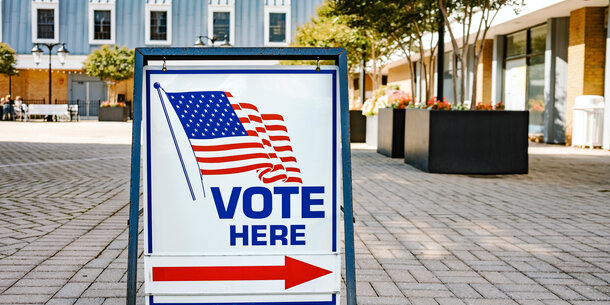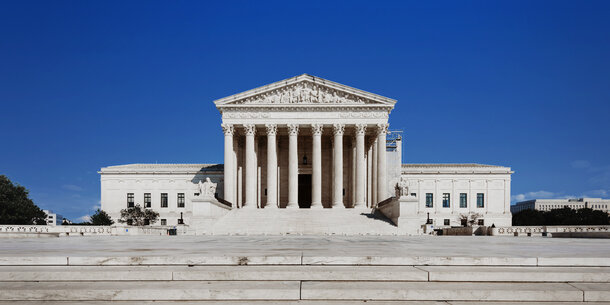In 1966, a dispute over a school board seat deep in Louisiana’s Black Belt triggered one of the earliest successful challenges to racial discrimination under the Voting Rights Act of 1965 — brought not by the government, but by voters.
In this early case filed under the Voting Rights Act’s Section 2, voters exercised a “private right of action” — a legal term for the ability of affected individuals or organizations to file a lawsuit. In doing so, Brown v. Post laid the foundation for decades of Section 2 litigation seeking to preserve and expand minority voters’ political power. But in recent years, a fringe legal theory that has found a modest foothold among a handful of judges is threatening this crucial avenue for voters.
A Pioneering Challenge to Voting Discrimination
A year after the Voting Rights Act was enacted, a Black candidate for the Madison Parish School Board defeated the white incumbent in the Democratic primary. Harrison Brown’s upset against Dorothy Provine set up what was supposed to be an inevitable win in the general election, as no Republican candidate appeared on the ballot. Brown’s primary victory and expected election win would have been particularly significant at a moment when the parish seat, Tallulah, was still segregated: Black residents occupied the western stretches, and white residents were in the east. The school board election also marked the first time that eligible Black Americans could cast a ballot without the restraints of the Jim Crow–era South.
But by November, a late write-in white candidate, J.T. Fulton, seemingly eked out a win over Brown by 269 votes in the Black-majority parish. There was one problem: Of the 512 absentee ballots cast in the election, 510 were cast for Fulton, and all by white voters. The results prompted Brown, along with Black voters from the parish, to go to court.
Instead of tactics that were race-neutral on their face yet clearly discriminatory in practice, such as poll taxes and literacy tests, Black voters in the parish faced more insidious schemes. Brown’s lawsuit uncovered that local clerk Jerome C. Post and two deputies had provided unsolicited absentee ballots to white voters at a nearby plantation and in an all-white nursing home, while not offering the same opportunity to Black voters. Brown challenged the vote denial under the Voting Rights Act’s Section 2, which bars voting laws and practices that dilute or abridge the right to vote on the basis of race or color.
A federal district court judge in 1968 found that the absentee process, allegedly conducted in “good faith,” deprived Black voters of their right to vote under the Constitution and Section 2, rendering the election invalid. A special election was called for April 9, 1968, which Fulton again narrowly won — although a purge of registered voters tainted that election too.
The Radical Break from Decades of Precedent
Since the dawn of the Voting Rights Act, federal courts heard Section 2 claims brought by voters. Without this ability to sue, many, if not most, of the claims against racially discriminatory voting policies would have gone unheard, leaving in place a far more unjust and imperfect electoral process. In order for Brown and the other parish voters to get through the court’s door, the underlying question of whether they had a right to sue had to be answered. This right was tacitly affirmed in Brown v. Post and accepted again and again in every one of the hundreds of Section 2 cases brought by individuals and organizations and heard by federal courts.
Until 2021. In a concurring opinion in a major Voting Rights Act ruling, Justice Neil Gorsuch called Section 2’s private right of action “an open question” — undercutting decades of judicial consensus. This invitation was accepted in 2022, when a district court, followed by the Eighth Circuit Court of Appeals in 2023, fully embraced this radical theory. The courts concluded that impacted voters and organizations can’t bring lawsuits under Section 2.
Last month, a second ruling by a panel of the Eighth Circuit narrowed enforcement power further, preventing voters from suing for Section 2 offenses under another federal law that broadly protects against government violation of civil rights. The net result is that in the Eighth Circuit, only the Justice Department can bring a Section 2 claim in court, contradicting what has long been standard practice dating back to the Voting Rights Act’s inception in the 1960s. That outcome is even more disastrous given the current Justice Department’s pullback from defending and enforcing the rights of voters.
Unless this ruling is reversed, voters of color in seven states largely across the Midwest will be stripped of the ability to contest discriminatory voting practices that harm them. This is part of a broader pattern in which the courts, led by the Supreme Court, are mounting a section-by-section assault on the Voting Rights Act.
Courts and Congress Support a Private Right of Action
While the text of the civil rights law does not explicitly mention private individuals when designating who enforces Section 2, the roots of this implicit and near-universal understanding extends from decades of court rulings and Congress’s own reports on the Voting Rights Act.
When Congress amended the Voting Rights Act in 1982, a pair of congressional reports spelled out the intent of lawmakers at the time. “It is intended that citizens have a private cause of action … under Section 2,” the House Judiciary report states. A report from its Senate counterpart reads, “The Committee reiterates the existence of the private right of action under Section 2, as has been clearly intended by Congress since 1965.”
Even before the Voting Rights Act was enacted, a 1961 report from the U.S. Commission on Civil Rights, created by the 1960 Civil Rights Act, explained why private enforcement is necessary in the first place: “Although the Civil Rights Division has been repeatedly increased in size and budget . . . it has not been able to prepare and file all the suits that appear warranted. . . . There is no widespread remedy to meet what is still widespread discrimination.”
What was true in 1961 remains a reality today: In the face of overt discrimination, it’s voters, not the government, who primarily seek relief in the courts. In the last 40 years, individuals and organizations have been the primary drivers of lawsuits enforcing the Voting Rights Act, bringing 93 percent of Section 2 cases. Of the more than 400 Section 2 claims brought in federal court, at least 197 were successful.
Among these cases, at least 11 were before the Supreme Court, with the justices explicitly allowing impacted citizens to bring challenges. In 1996, the majority opinion in Morse v. Republican Party of Virginia quoted part of the Senate report, writing that “although [Section] 2, like [Section] 5, provides no right to sue on its face, ‘the existence of the private right of action under Section 2 . . . has been clearly intended by Congress since 1965.’”
Even in the 2013 Shelby County v. Holder decision, in which the Supreme Court dismantled Section 5 of the Voting Rights Act, Chief Justice John Roberts acknowledged a private right of action for individuals under Section 2: “Both the Federal Government and individuals have sued to enforce [Section] 2 . . . and injunctive relief is available . . . to block voting laws from going into effect.”
More recently, in 2022, the Supreme Court sided with groups of Black voters and community organizations and struck down an Alabama congressional map for violating Section 2 in Allen v. Milligan, implicitly affirming that voters are empowered to sue in the first place.
This history, precedent, and Congress’s own words confirm that a private right of action is not only necessary for enforcing Section 2 but was always intended.
When enacted, the Voting Rights Act — considered by Rep. John R. Lewis to be the “crowning achievement” of the civil rights movement — was a comprehensive and powerful tool for equalizing political participation, and voters of color have led the charge to enforce it. Courts must not stand in their way. The strength of the Voting Rights Act depends on it.



